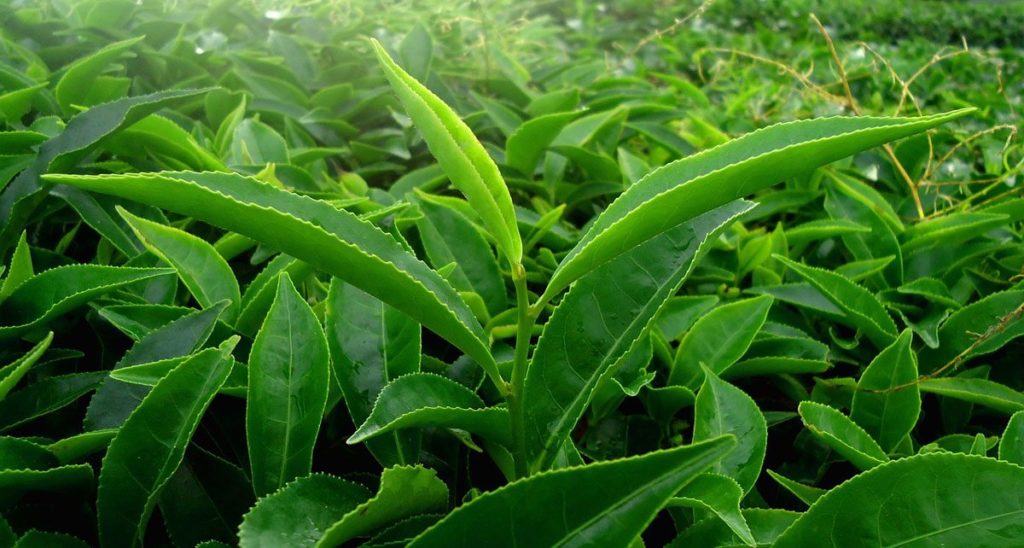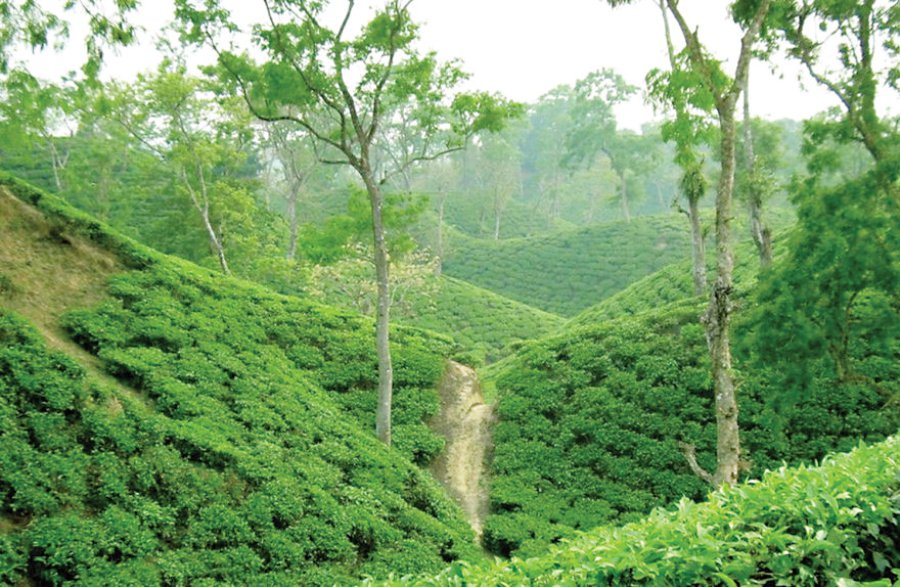Global warming hits tea industry worldwide
Global warming and resultant climatic changes have emerged as the biggest threat to the future of tea industry worldwide. However, most tea growing countries have responded to the challenge in a half- hearted manner. Under present climatic conditions, the production of leaves that make possible the cup that cheers, is suffering both in terms of quality and quantity. The process may be likened to a slow death as far as tea is concerned. At this rate, the price of of one’s daily cuppa may hit the ceiling in a few years, owing to a drastic fall in availability. The full implication of the emerging situation cannot be assessed until one pauses to recall a simple fact: after water, tea is the second most common as well as acceptable drink in the world. Clearly, the future of tea industry is of grave importance worldwide – it results in an annual business turnover of $30 billion, expected to hit $44.3 billion by 2021. As old plants begin to wilt in hotter conditions, tea leaves lose their freshness, colour and aroma. The dust varieties also suffer. Growing good tea is a patient, long term business. Most existing plants are between 35 to 90 years old. Rains have declined in most areas, Even when it rains, the precipitation is unpredictable and unbalanced,. Periodic cyclones and thunderstorms cause heavy precipitation and brief spells of flooding. But mostly the weather remains very hot and dry in most parts in South Asia for long spells. This plays havoc with the usual work schedule of tea plantation and disrupts planning and production. Major producers are implementing suitable adjustments. There is general agreement however, that working out even a partially effective solution could be costly in terms of time and money. To begin with China, the largest producer in the world, output from Hunan and adjacent areas has been plagued with uncertainties in recent years. Researchers claim that re-aligning slopes within plantations and rearranging the terrain have helped, but they do not go far enough. More irrigation and the planting of larger trees to offer more shade have been carried out. But this is very much work in progress and it could take some years for the improvement to become noticeable. As for India, industry circles concede that the taste of Indian varieties is changing for the worse. Fortunately most tea drinkers, being casual consumers, may not be immediately aware of the decline. Industry circles in Africa fear that production may decline by as much as 50% by 2050, if present weather patterns persist.
In Assam, which produces of 55% of total production in India, which is estimated consistently at around 980,000 tonnes annually. Indian Tea Association(ITA) circles are increasingly edgy over the vagaries of the weather. Assam has 850 plantations, apart from scores of smaller of unregistered gardens. ITA spokesmen point out that the production began to fluctuate disturbingly as the new millennium began. Between 2006 and 2009, production declined from 564,000 tonnes to 487,000. There has been little improvement in the situation. The reduced production has ensured that prices for even ordinary grades remain fairly high throughout the year, domestic demand for tea in India being among the highest in the world. In Assam, experts point out during the last eight decades, rains have reduced by almost 20%. Despite occasional fluctuations, the warming of the atmosphere continues relentlessly. Rising temperatures, stronger sunlight and diminishing rainfall, directly threaten the future of tea, rice and rubber production – all items critically important for the very survival of populations in India, Bangladesh and Sri Lanka. The earlier climatic trend for Assam and the Northeast, when there used to be heavy rainfall in the April-May months, seems to have ended. To add to the woes of the tea industry, the heating is not restricted to summer months, when it is not uncommon for temperatures to exceed 40C for long spells in Assam. In parts of neighbouring Meghalaya, rainfall has also declined significantly. Until about15 years ago, ago, it was uncommon in Assam for summer average temperatures to soar above 35/36C. To make matters worse, during winter, instead of lowest temperatures often dropping to 5 or 6C, the minimum temperature hovers around 8/9C these days, which affects the highly weather sensitive plants. The side effects of such changes are no less worrying. There is a dampness in tea leaves which was not the case earlier. It used to be easier for planters to use effective pesticides. Some only used organic methods to do away with pests. But changes in the weather have resulted in new kinds of pests and afflictions, which are more difficult to deal with. The cumulative effect of all this has (a) affected production,(b) lowered the quality of the produce, but also(c) changed the taste of the hot steaming drink.
Assam
According to Assam ITA sources, production stands badly affected in at least one-third of the plantations, which results in a loss in overall volume sold. Researchers at Tocklai Institute fear that given these changes, plants cannot be expected to survive beyond 30/35 years instead of the norm of 40/45 years in the past. The leaves growing at present are weaker and lower in terms of quality. It takes a decade or so to get a plant’s leaves ready for conversion into marketable tea. Earlier, plants survived up to six decades or more, but this is no longer the case, which hits the industry’s long term prospects. Rainfall has reduced by almost 200 milimetres annually in Assam, Meghalaya and adjoining areas. Temperatures on the other hand, have gone up by 1.5 to 2C on average gradually. Interestingly, smaller growers have not been affected to that extent largely because they do not produce high quality varieties. They account for almost 30% of the total Assam production. Experts think that the state has already suffered a drop of 17% in volume during the last decade. North Bengal has been hit the hardest, with 70% of the gardens registering losses. It has to be admitted that here, even more than global warming and its effects, poor management has been the bane of the industry, unlike Assam. Between 2000 and 2015, North Bengal’s production declined by 13.49%, accounting for a shortage of 39.24 mllion kilograms (mkgs). Both Dooars and Terai gardens suffered major drops in production, amounting to nearly 38 mkgs. The failure of the state and central government so help the industry have been remarkable. Even the recent closure of a number of gardens and over 200 poor tribal workers dying of starvation during the past decade has moved either the state or the centre to take minimal action. The question of trying out new measures to cope with the rising heat and protect their gardens does not seem to be uppermost in the minds of most North Bengal planters.
South India and Sri Lanka
In South India, only Tamil Nadu has reported a small increase in production, but there has been a dip in Kerala and Karnataka. The annual decline in output from south India is estimated at 7.32%. In Sri Lanka, which poses a competition to India in the export of cheaper varieties especially, around 200,000 hectares of land under tea has been affected. This led to 60% of the smaller producers, who account for 70% of the island’s total production of around 335 million kilos ( mkgs), losing output. Among remedies, Sri Lankan experts are trying to introduce tougher varieties, better soil conservation and irrigation, and improving the environment, along with water harvesting. It seems producers in India too could benefit by introducing water harvesting techniques to protest their gardens.
Kenya
In Kenya, experts fear that by 2020, total production would go down by 10%, if present trends continue. The quality of tea has suffered somewhat so that the price of certain varieties has dropped, In terms of green leaves too, production has fallen. Erratic rains and continuing dry weather, hailstorms and frost etc are among the problems that afflict 40% of the total area under cultivation. Kenya has gone in for a massive afforestation programme, planting more trees in the gardens to ensure more shade for tea plants. Still, over 500,000 small farmers have taken a hit.. In recent years, production declined from 224.48 mkgs to 175.2 mkgs.
Bangladesh
Bangladesh despite having 166 plantations until recently, has gradually fallen behind in the production and export of tea. Its exports dwindled sharply from Tk120.5 crore in 2000 to Tk89.4 crore a year later and there has been no real turnaround since. This, despite a fairy sustained record of growth in production from 39.81 mkgs to 63.88 mkgs between 1980 to 2014. Among the importers of Bangladeshi tea were Afghanistan, Australia, the UK, the USA. Jordan, the UAE and Japan. According to industry circles in Bangladesh, several factors impeded growth: including poor management, lack of capital and investments, quality issues, lower labour productivity and wages. Perhaps it is time for Bangladesh policymakers to take a serious look at the industry and work out a programme of revival. However, almost universally, plantations located at higher altitudes, in the hilly regions, have been less affected by warming conditions. In such areas, the frequency of misty weather helped the growth of the crop. This could be a glimmer of hope for the world famous Darjeeling varieties and new Sikkim products that have hit the market.











